"Park at the monastery below and walk up to the house through the olive groves,” advises garden designer Tania Compton. I’ve just driven from Athens, down through the Peloponnese peninsula to the middle of three rocky limbs of land that extend into the sea, where the Ionian meets the Aegean. Until recently, this was one of the wildest areas of Greece, blessed with a diverse landscape of mountain forests, meadows, steep rocky slopes, abundant wildflowers and intensely scented herbs.
I follow a well-trodden path, curving gently through the dappled shade past an amphitheatre-like terraced olive grove. The house sits high on the brow of the hill, rising above the silvery crowns of the olive trees. Immense, aged stone walls hold the land as they have done for generations, accommodating all manner of wild plants.
Heading upwards, I reach a level, planted plateau – an archaic glade where bird song fills the air from the branches of almonds, oaks and olives. Pale-silver globes of Teucrium fruticans ‘Ouarzazate’ and Lavandula dentata var. candicans blaze with buzzing bees. Butterflies flutter on the purple flowers of Salvia leucophylla and the last of the Oenothera lindheimeri flowers. If one of Tania’s aims here was to enrich biodiversity, she has succeeded.

The owners, James and Charlotte Heneage, didn’t formally brief Tania when they asked her to design the garden for their home from home, but their shared appreciation of Alberti’s 15th-century architectural treatise De re aedificatoria was strongly influential. When Tania first saw the place, she told them: “You have found the perfect Alberti site. It has everything – the mountains, the sea, the landscape.”
Her response to the site was to design a sensually rich, warm space of greys, greens, blues and purples, which drifts out to connect the eye to the most breathtaking panorama. To the east, a vast face of craggy limestone rises to the peak of Mount Taygetos, known locally as Profitis Ilias, or Prophet Elias, in whose honour the the house and garden is named. As if views of the mountain were not enough, on the other side of the house, the Ionian Sea sparkles in the Messenian Gulf, and makes up the western part of the 360-degree view from this enchanting place.
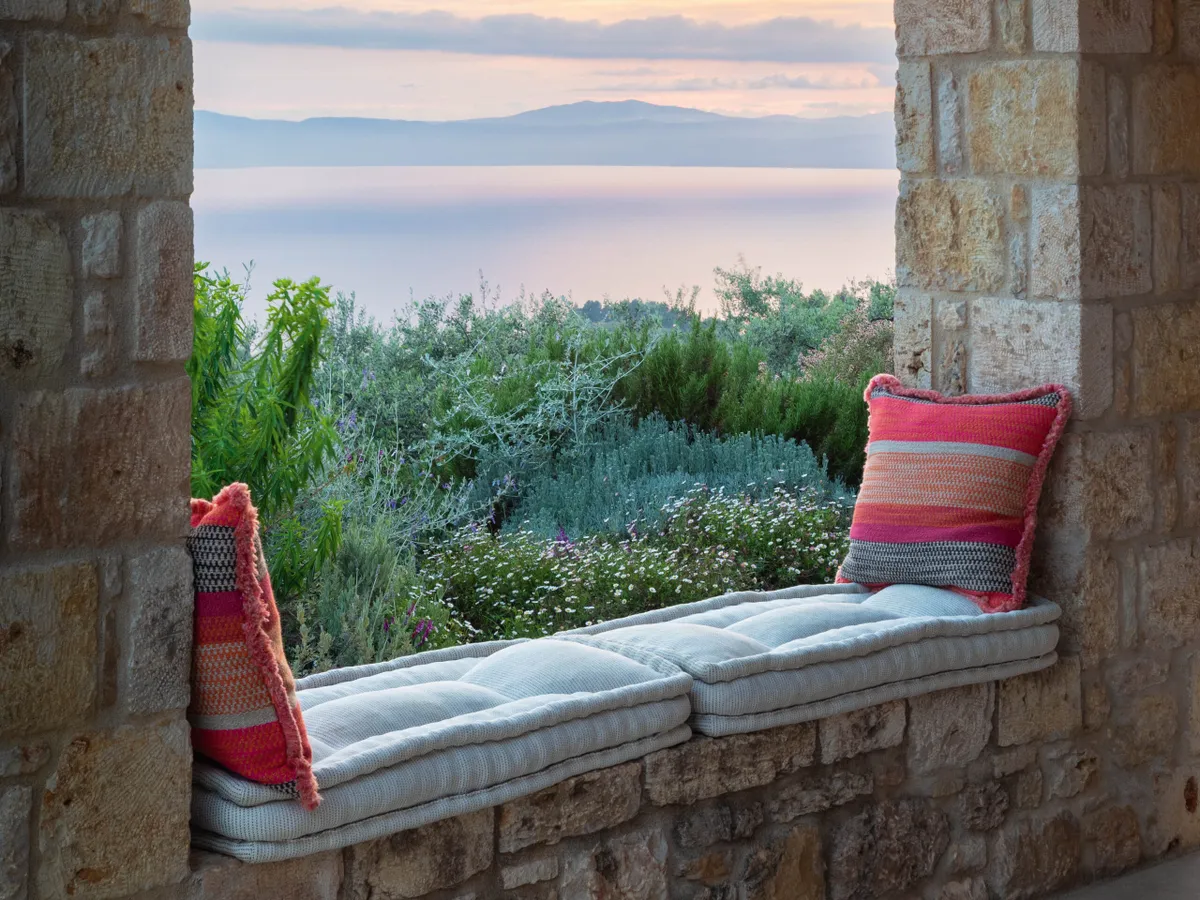
The overriding concept was to keep the sense of that spectacular panorama. “We cleared whatever was blocking the view of the mountains,” says Tania. “Once we’d removed a monoculture of scrub oak, and densely seeded cypresses, you immediately felt the connection to Mount Taygetos, and the relief was immense.”
Tania took a very hands-on approach to planning and planting the garden, and made frequent and regular visits with colleague Heli Carr-Smith, with measuring tape, marking-out string and spray paint at the ready. Stone paths, a contemporary take on the traditional Greek cobbled path or kalderimi, meander through the plantings, while local gravel serves as the surfacing for peripheral routes.
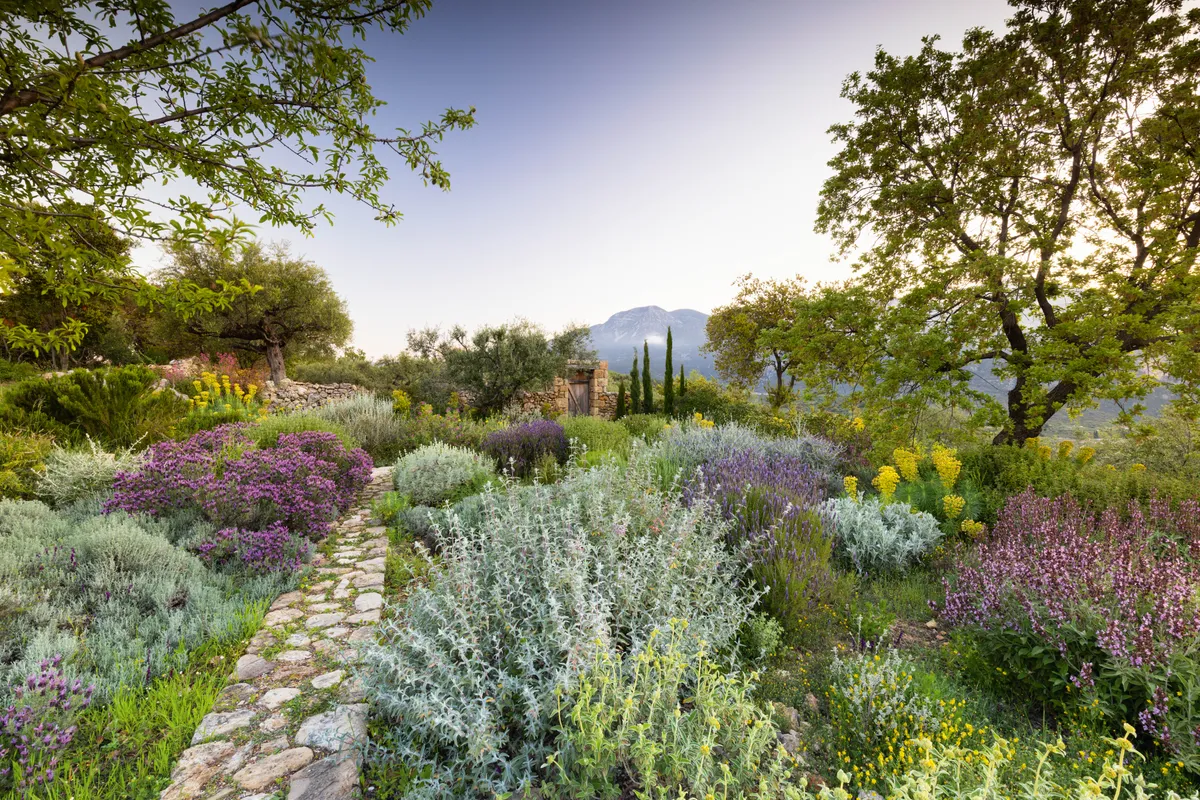
Tania and Heli led the small team for all the planting phases that took place over a couple of years, in between the construction episodes. “We planted in five waves to make it more manageable, beginning with the olives, which we sourced from a neighbour. Pretty much everything else came from Olivier and Clara Filippi’s nursery in France.” The pioneering Filippis have long been cultivating plants dedicated to dry gardening. Their search for the toughest natives has taken them to the climatic extremities of Mediterranean Europe over many years, and this garden features many of their finds.
Near the entrance of the house, the clustered, mustard-yellow flowers of Bupleurum fruticosum are offset beautifully by domes of Phillyrea angustifolia and myrtle. Euphorbia ceratocarpa and chaste tree (Vitex agnus-castus) grow exuberantly. Mounded aromatics are also woven into the tapestry, from silvery-green Origanum ‘Clara’ to long-flowering Salvia ‘Allen Chickering’, locally growing Lavandula stoechas plus many rosemaries, cotton lavender and curry plant, as well as the incredibly useful cushion of fine-green leaves that is Lotus dorycnium. “Now I am weaning the plants off irrigation, and the idea is that self-seeders will perpetually restock the garden,” Tania explains.
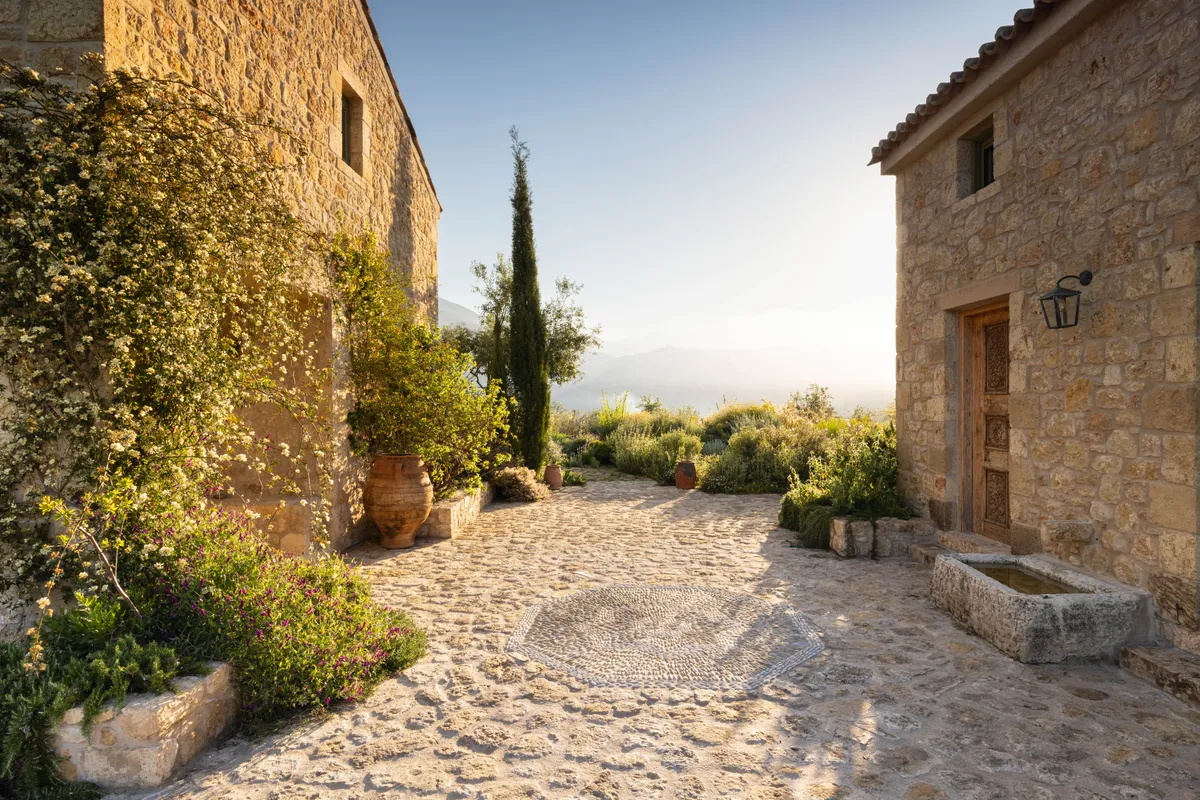
As effortless as it looks, there were many challenges to overcome in the making of the garden, including the climate. “I had to choose plants that could survive summer highs of 45ºC and winter lows of -3ºC,” says Tania. “The reclaimed stone trough at the entrance was frozen solid when I visited one January.” Though the lows tend not to endure, rainfall comes thick and fast in the winter, but luckily the terraced land is very porous and absorbs it all. Another issue was the rocky soil. “What wasn’t rocky was heavily compacted by construction machinery. We rotavated where we could, but this was a planting-with-pickaxes job.”
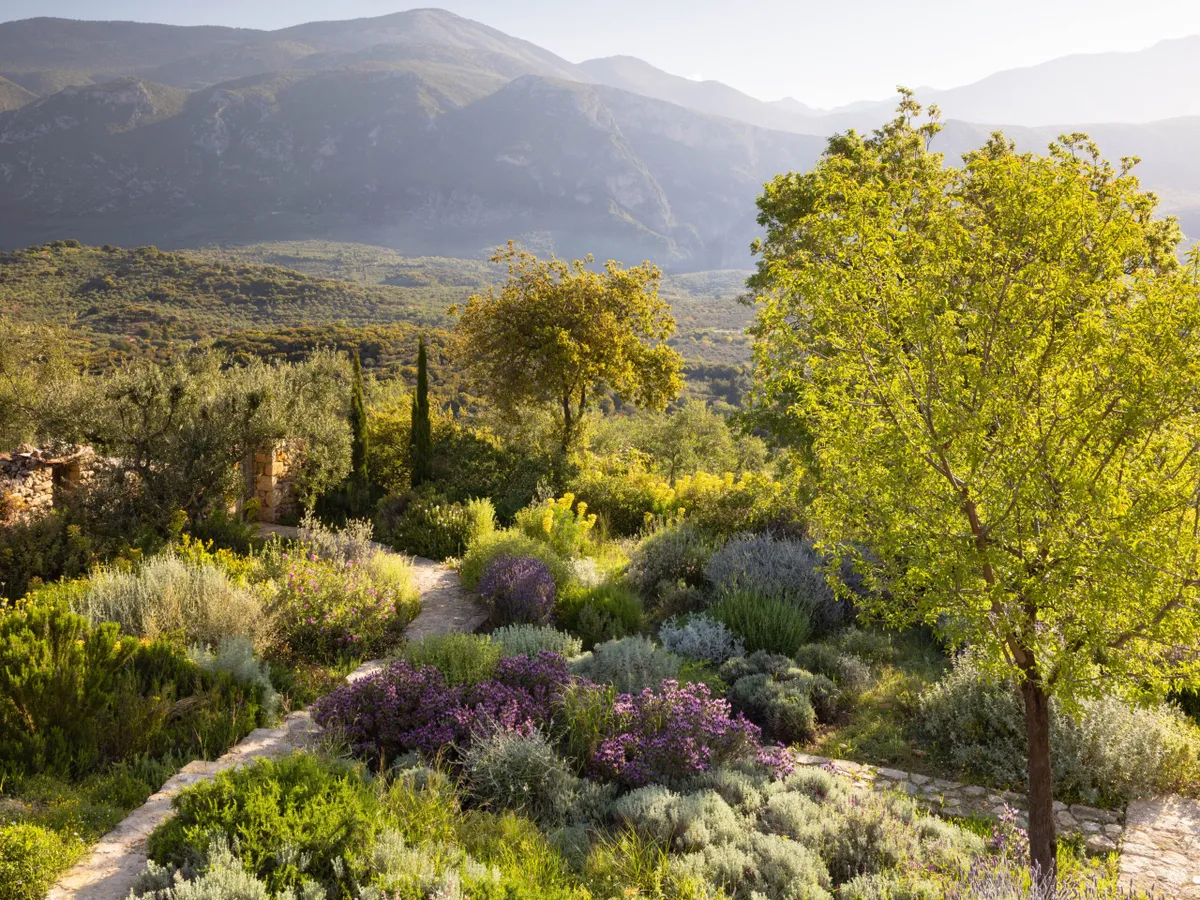
As the garden matures, Tania retains a guiding hand, and she and Heli visit annually to prune. Gardener Kosta Plaku, the local custodian of the land, was in favour of greater intervention on the cutting front, but Tania’s protestations of “Romantica, romantica, I want romantica!” proved a revelation to his understanding. She has, hopefully, converted him to her cause of a softly, softly approach for this magical natural haven.
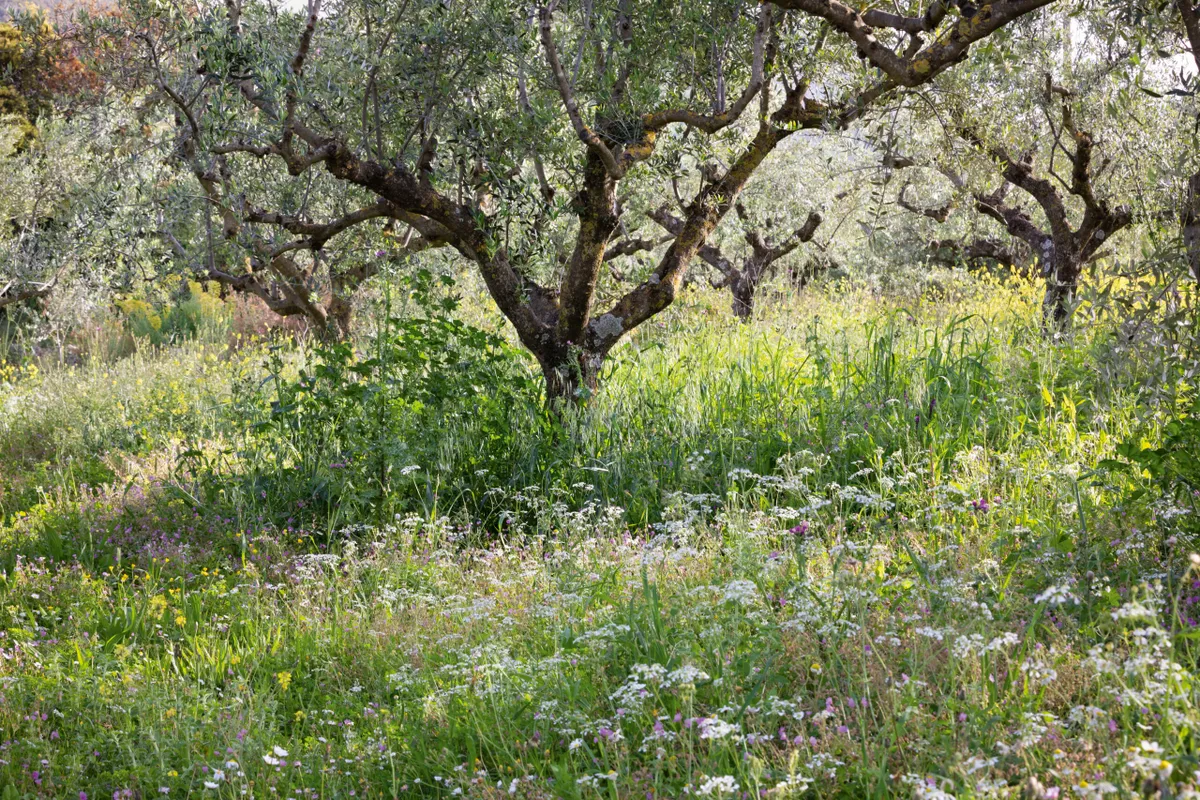
IN BRIEF
Name The Ilias Estate.
What A Mediterranean dry garden.
Where Peloponnese peninsula, at the southern tip of the Greek mainland.
Size Ten-acre estate, with a planted area of around 1,300 square metres.
Soil Alkaline, well-drained, stony soil.
Climate Mediterranean with long, hot, dry summers and short, rainy winters). Temperature can range from -3ºC in winter to 45ºC in summer.
Hardiness zone USDA 10.
USEFUL INFORMATION
The house at Ilias Estate is available for holiday rentals. Find out more at iliasholidays.co.uk
8 plants for a hot, dry garden
Euphorbia characias subsp. wulfenii
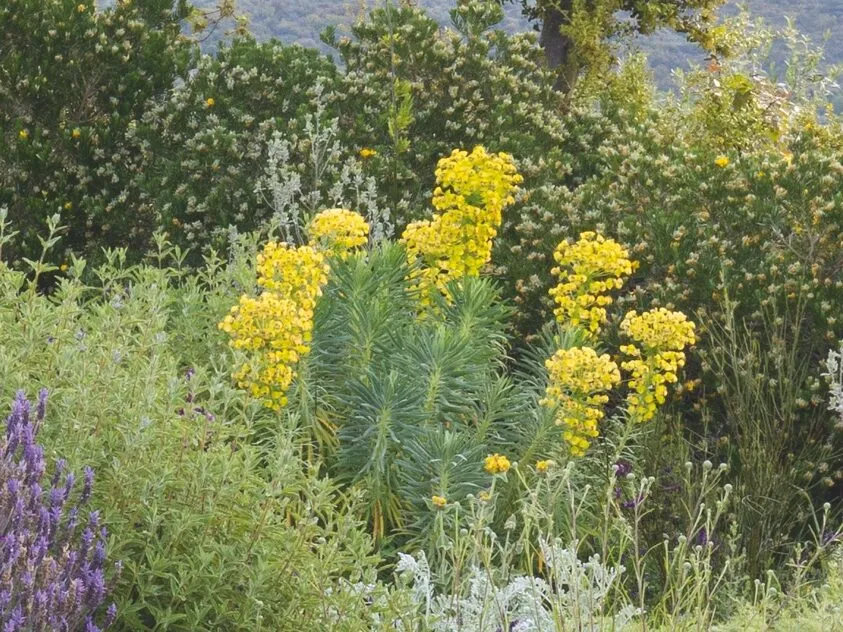
Occurs naturally on this site, growing out of walls and rocks. Brilliant lime-green flowers from February to May or June. Prefers good drainage. Height and spread: 1m x 1m. RHS H4, USDA 6a-8b†.
Satureja thrymba
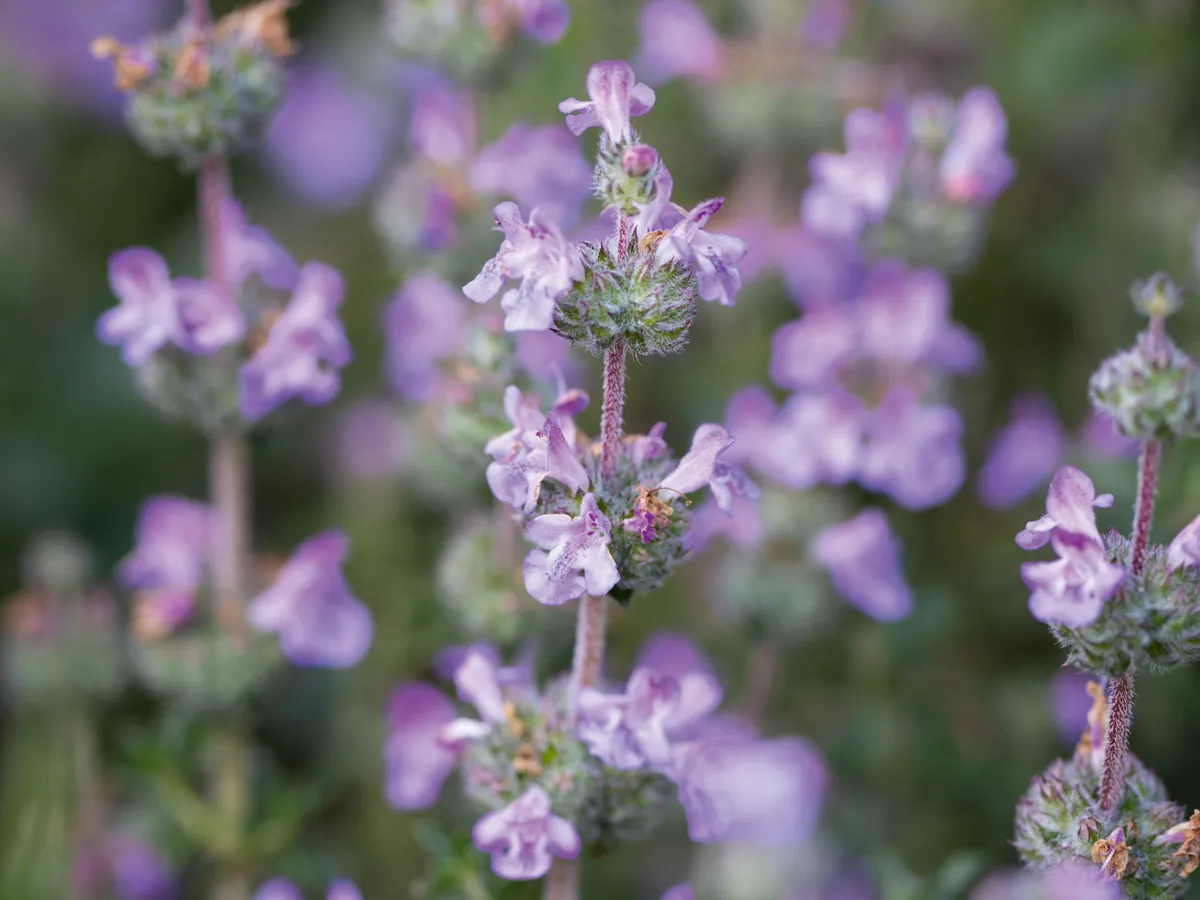
Aromatic, cushion-shaped sub-shrub, happiest in sharply drained soil. Masses of mauve flowers from April to June. 60cm x 80cm.
Teucrium fruticans ‘Ouarzazate’
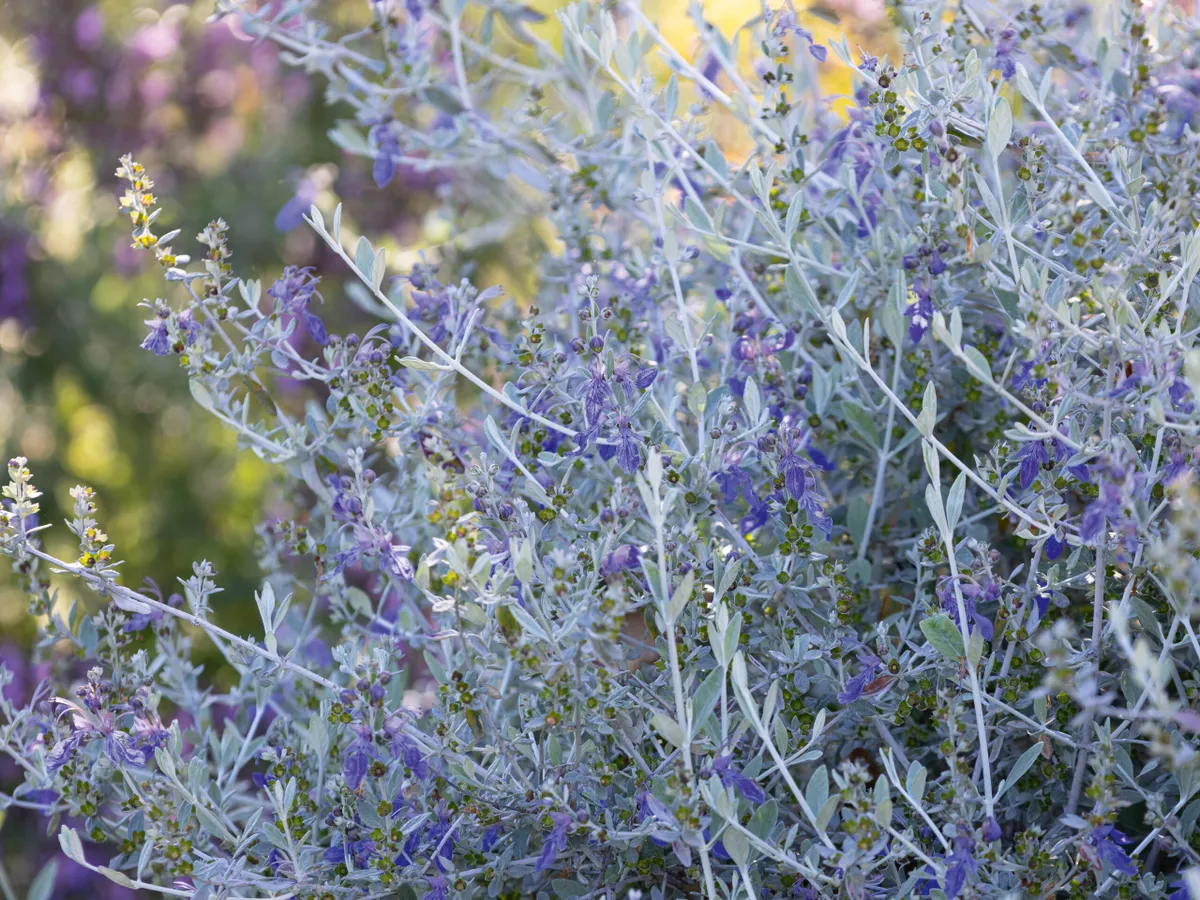
Abundant, deep violet-blue flowers from January until June. Well-drained soil. 1.5m x 1.5m. RHS H3, USDA 8a-10b.
Lavandula dentata ‘Ploughman’s Blue’
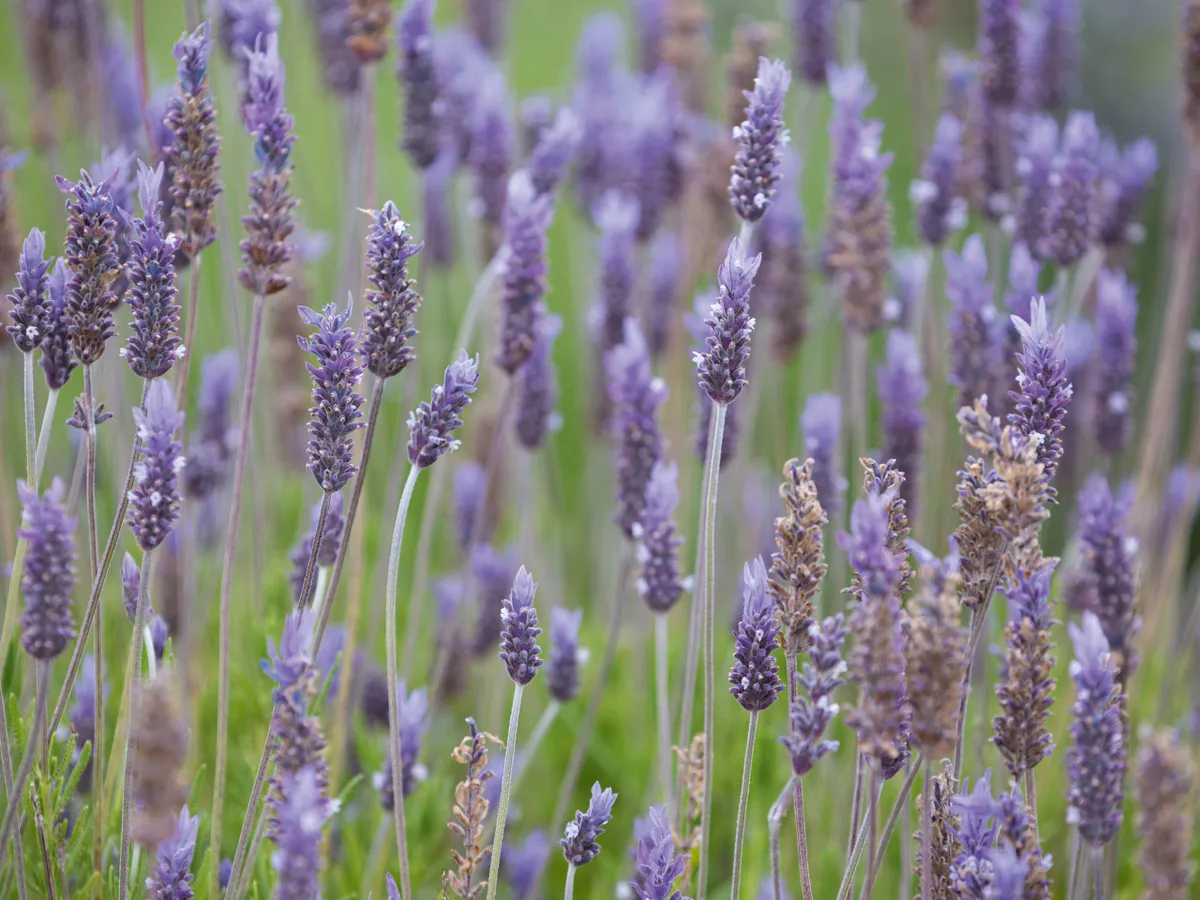
Aromatic lavender with grey, downy foliage. In Greece, it flowers from February to June and then again from September to November. 60cm x 60cm. RHS H3.
Lomelosia minoana ‘Schéhérazade’
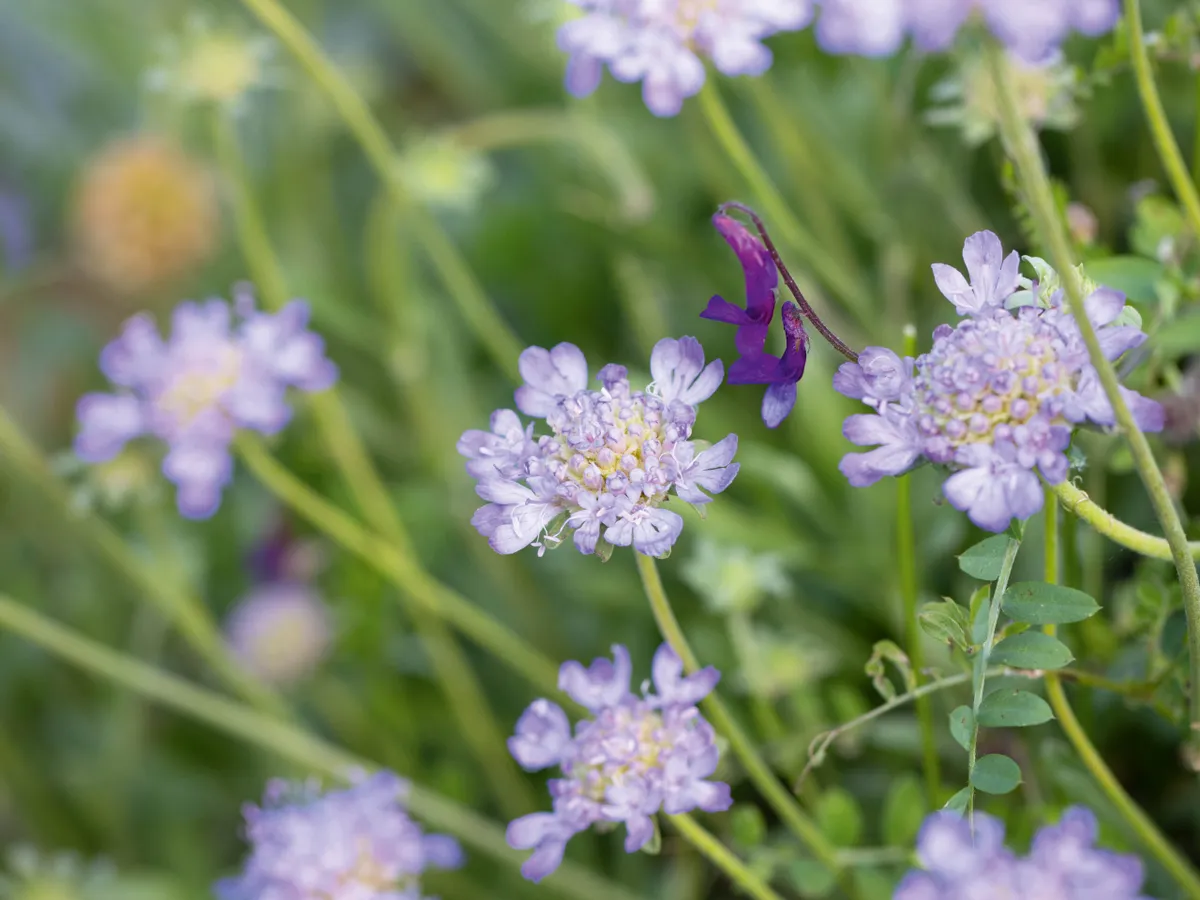
From March to July, masses of deep purplish-mauve flowers adorn this beautiful, rounded cushion. Contrasts well with silky, silvery-grey evergreen foliage. 60cm x 60cm. RHS H4.
Rosa banksiae var. normalis
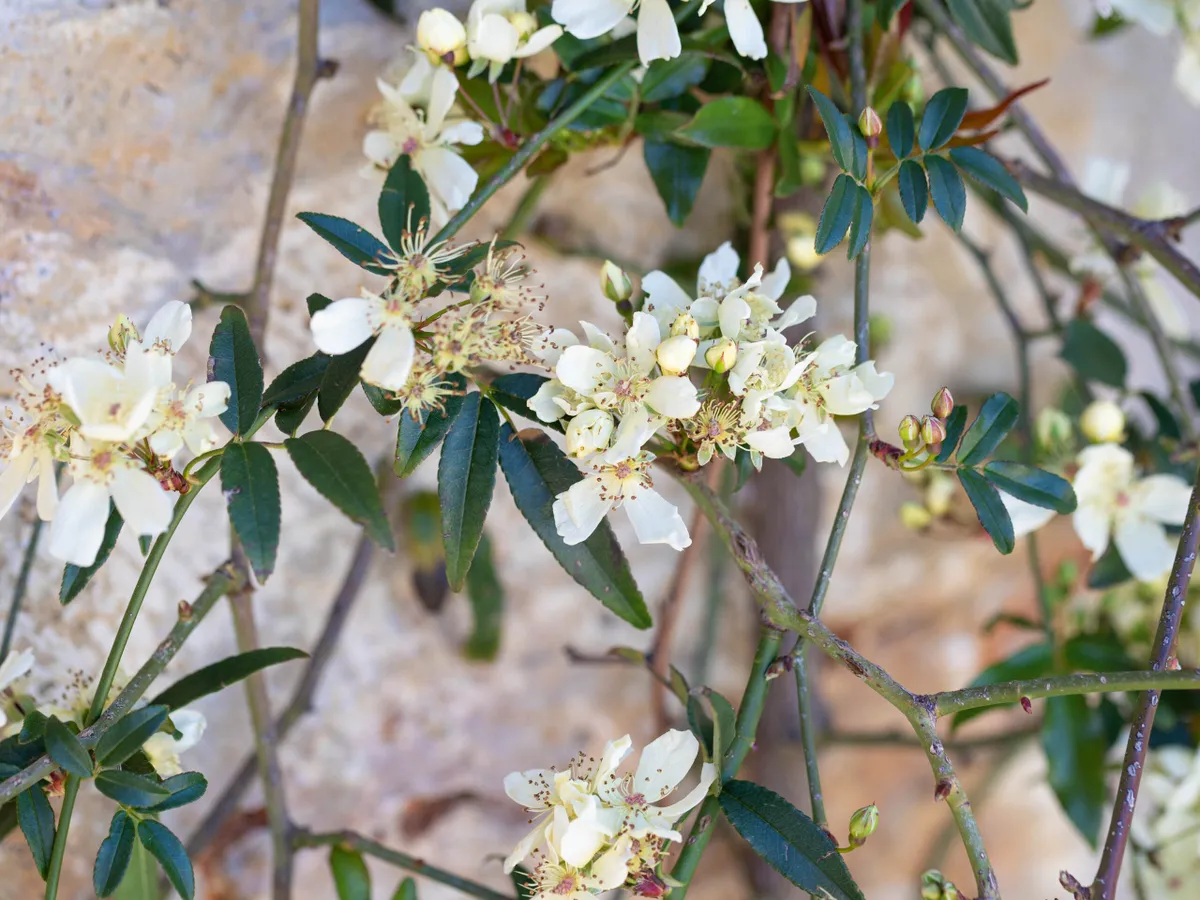
Has already covered a house wall just four years after planting. Its slender stems are covered in a profusion of single, creamy-white, sweetly scented flowers. 4-8m x 2.5-5m. RHS H5, USDA 8a-10b.
Euphorbia ceratocarpa
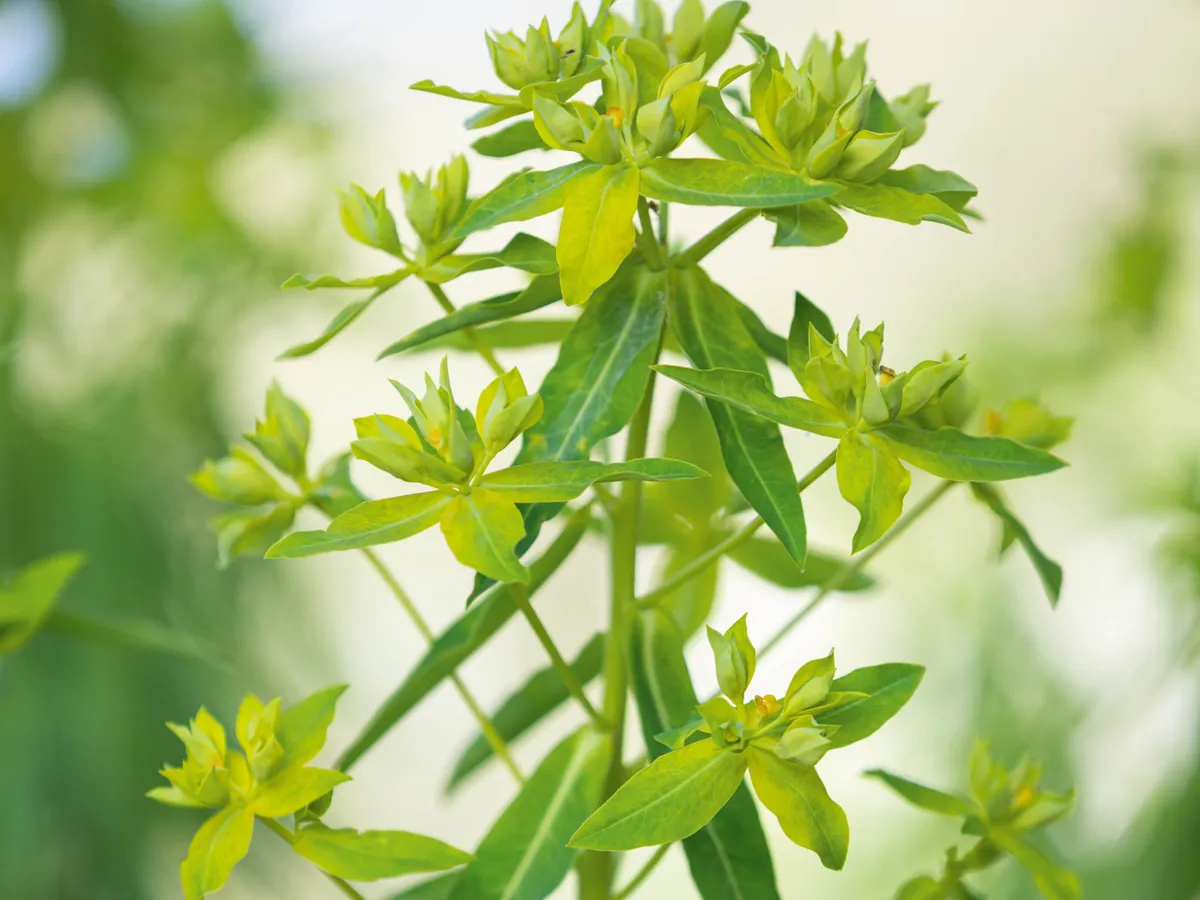
This resilient Mediterranean spurge is tolerant of different soils but clearly enjoys the free-draining conditions in this garden. Lime-green flowers from April to July make a wonderful contrast to pastel colours. 1m x 1m. AGM*. RHS H4.
Salvia ‘Allen Chickering’
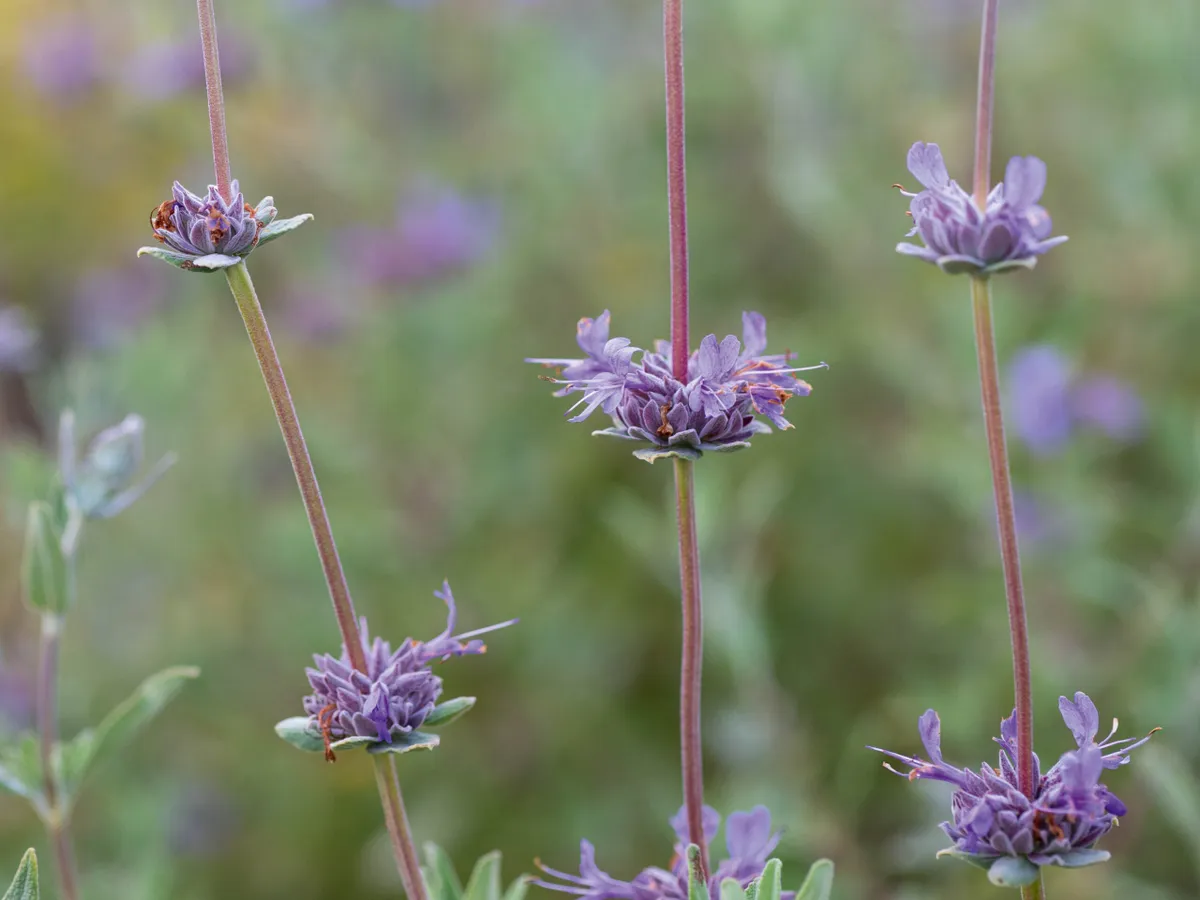
This eye-catching perennial salvia gives height to the planting. Deeply aromatic, grey-green leaves with whorls of purple flowers from May to July. Enjoys a light, well-drained soil. 1m x 1m. RHS H6.
*Holds an Award of Garden Merit from the Royal Horticultural Society.
†Hardiness ratings given where available.




